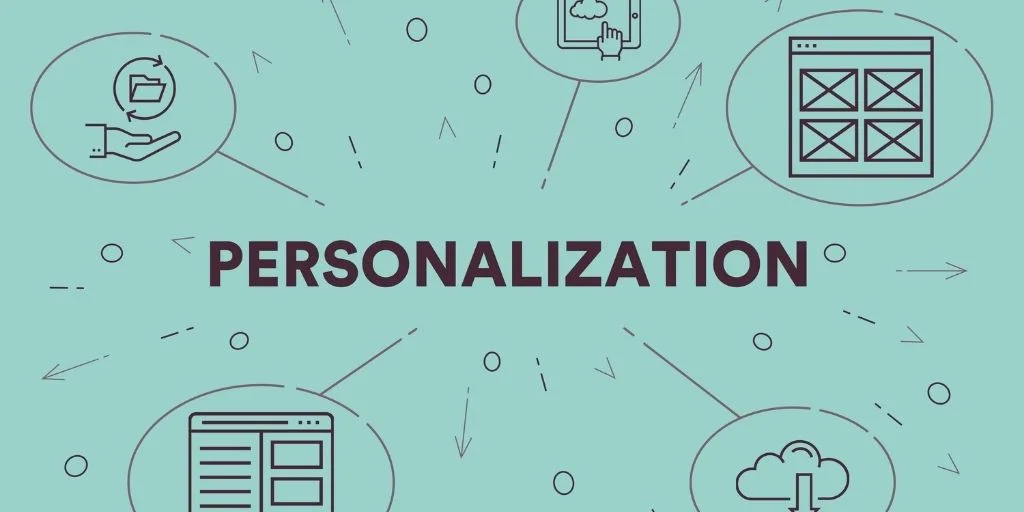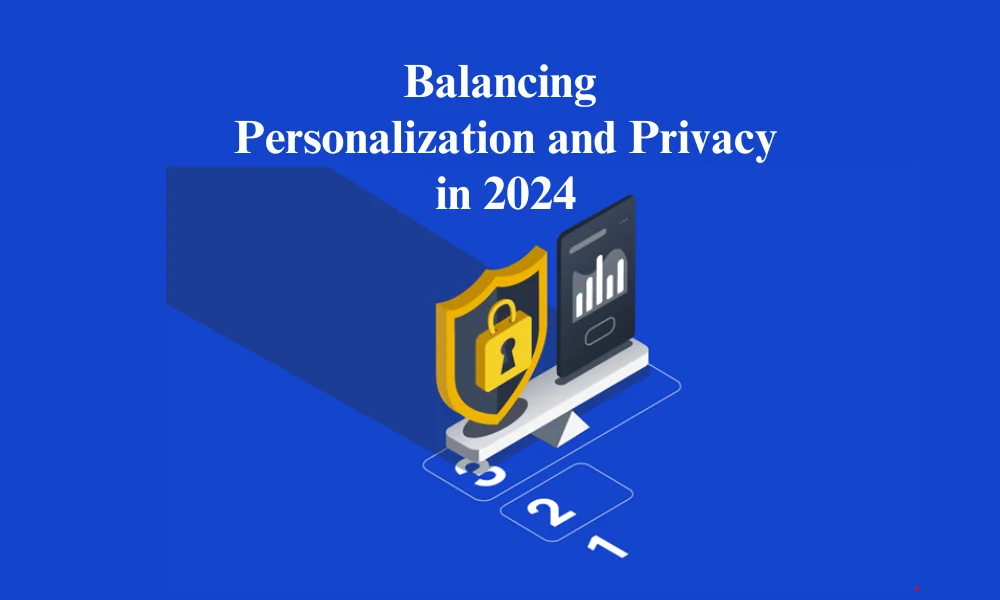In 2024, the balance between personalization and privacy is more crucial than ever. As technology continues to advance, businesses and consumers are increasingly struggling with how to enjoy personalized experiences without sacrificing data security.

This blog explores the dynamics of personalization and privacy, offering insights on how to achieve harmony in today’s digital landscape.
Importance of Personalization
The business landscape is constantly evolving, demanding continual adaptation for brands to stay noticed. Personalized marketing bridges this gap by tailoring content and recommendations to individual customer preferences. Similar to Amazon’s suggested products based on past purchases, relevance fosters engagement and conversions by resonating with what truly matters to each customer.
Personalization has become a cornerstone of modern digital experiences. From tailored content recommendations to customized shopping experiences, businesses leverage data to provide users with relevant and engaging interactions.

Benefits of Personalization:
| Benefit | Explanation | Examples |
| Enhanced User Experience | Personalized content and recommendations align with individual preferences and behaviors, making interactions more relevant and enjoyable. | Customized product suggestions on e-commerce sites. |
| Increased Engagement | Tailored interactions encourage users to interact more frequently and deeply, which can lead to increased time spent on a platform or website. | Personalized email campaigns with relevant content. |
| Targeted Marketing | Personalization enables businesses to create more precise marketing campaigns that reach the right audience, thereby optimizing ad spend and enhancing effectiveness. | Targeted ads based on browsing history. |
| Better Conversion Rates | By addressing the specific needs and interests of users, personalized content can significantly increase the likelihood of conversions, such as sales or sign-ups. | Personalized landing pages based on user interests. |
| Customer Retention | Personalized experiences build stronger relationships with users, leading to higher retention rates and long-term customer loyalty. | Loyalty programs with personalized rewards. |
Privacy Issues in the Digital Age
While personalization offers significant advantages, it also raises important privacy concerns. The collection and use of personal data have become central issues, as users are increasingly aware of how their information is being handled.

Key Privacy Concerns:
Data Security
Safeguarding personal information from unauthorized access and breaches is crucial for maintaining trust. Effective measures include encryption, regular security updates, and robust access controls to ensure sensitive data remains protected against cyber threats and vulnerabilities.
Transparency
Users expect clarity on data collection, storage, and usage practices. Transparent policies and clear communication help build trust by ensuring users understand how their data is handled and protected.
Consent
Gaining explicit permission from users before collecting and utilizing their data is essential for ethical data practices. This ensures users are aware of and agree to how their information will be used, fostering trust and compliance with legal standards.
Best Practices for 2024: Finding the Balance
Finding the right balance between personalization and privacy requires a thoughtful approach. Here are some best practices for achieving this equilibrium in 2024:
Strong Data Protection Measures:
Imagine a vault for your data! Encryption scrambles it, making it unreadable without a special key. Secure storage solutions, like firewalls, act as guardians, keeping unauthorized access at bay. Think of security protocols as shields against threats. Regular updates patch weaknesses, ensuring your shield stays strong against ever-evolving cyber dangers.

Transparency About Data Practices:
Be upfront with users! Privacy policies and user agreements should clearly explain how their data is collected, used, and shared. It’s like providing a roadmap for their data journey. Empower your users! Give them easy access to their data, allowing them to review and manage their privacy settings.
Imagine a control panel where they can adjust how their data is used. Respect user privacy! Before collecting or using data, ensure users are informed and give their explicit permission. Think of it as asking politely before borrowing something.
Use Data Responsibly:
Don’t be a data hoarder! Collect only the information necessary to provide users with a personalized experience. Focus on quality, not quantity. Stay on track! Regularly review and update your data practices to ensure they comply with current privacy regulations and best practices. Think of it as a regular check-up for your data practices.
Educate Users:
Knowledge is power! Provide users with resources and guidance to help them understand how their data is used and how they can protect their privacy. Imagine offering a user guide for data privacy. Build trust! Foster an open dialogue with users about privacy and personalization. Be receptive to their questions and concerns. This builds trust and strengthens your relationship with them.
Mistakes to Avoid When balancing personalization with Privacy
In the digital age, balancing personalization with privacy requires a careful approach. One mistake is data overreach: collecting more information than necessary. Focus on details directly relevant to your personalization goals, avoiding sensitive demographics or data prone to bias. This minimizes user discomfort and potential misuse.

The second mistake is transparency blunders. Be upfront about data collection and usage. Clearly explain what information is gathered, how it’s used, and how users can control their data. A well-written privacy policy in plain language builds trust. By avoiding these pitfalls, you can create a personalized experience that respects user privacy, fostering a positive and sustainable relationship.
Conclusion
In 2024, the interplay between personalization and privacy is more important than ever. By adopting best practices that prioritize data protection, transparency, and user consent, businesses can offer personalized experiences while respecting user privacy. Achieving this balance not only enhances user trust but also fosters long-term success in a digitally-driven world.
Read more : Advertising trends in 2024
Read more : Crafting Effective Multi-Channel Marketing Campaigns For 2024
FAQs
Personalization enhances user experience by providing tailored content and recommendations, increasing engagement and conversion rates, and optimizing marketing efforts.
Main concerns include data security, transparency about data use, and obtaining explicit user consent for data collection and processing.
Businesses can protect privacy by implementing strong data security measures, being transparent about data practices, obtaining explicit consent, and using data responsibly.
User consent is crucial as it ensures that data collection and use are done with the user’s knowledge and agreement, which is fundamental for ethical data practices.
Technologies such as artificial intelligence, machine learning, and blockchain can help balance personalization and privacy in 2024 by enabling secure data processing, decentralized data storage, and robust encryption methods.

Alex Mitch
Welcome to my blog! With over 10 years in digital marketing , I’ve seen its incredible impact on smaller businesses. Join me as we explore how digital marketing can grow your audience and boost your business. Whether you’re an experienced entrepreneur or just starting out, you’ll find practical tips and insights to enhance your digital marketing strategies.





